Kepler Community Spotlight: Accelerating Target Panel Design with Jack Chai, MD, PhD
From 18,000 Genes to Precision Medicine: How Kepler AI Accelerates Target Panel Design
A Case Study in AI-Accelerated Genomic Discovery
In precision oncology, designing targeted gene panels traditionally requires weeks of manual curation, statistical analysis, panel optimization, and probe evaluation. Jack Chai—a physician turned biomedical scientist, passionate about harnessing AI and emerging technologies to advance clinical innovation and precision medicine—recently demonstrated how this entire process can be compressed into just hours using Kepler AI's platform, while maintaining the quality and reproducibility of results.
Starting with mutation data from thousands of cancer samples across multiple cBioPortal studies, we designed optimized gene panels that maximize diagnostic sensitivity while minimizing cost. Here's how we did it.
The Challenge
Modern cancer genomics presents researchers with overwhelming complexity: over 18,000 potential gene candidates, mutation data scattered across databases, and the need to balance clinical relevance with technical feasibility and cost constraints. Jack's goal was to transform this vast genomic landscape into precisely optimized panels of 20, 50, and 100 genes for cancer research applications.
The Solution: Five-Phase AI Workflow
Jack developed a comprehensive workflow using Kepler AI. The following diagram illustrates the complete pipeline:
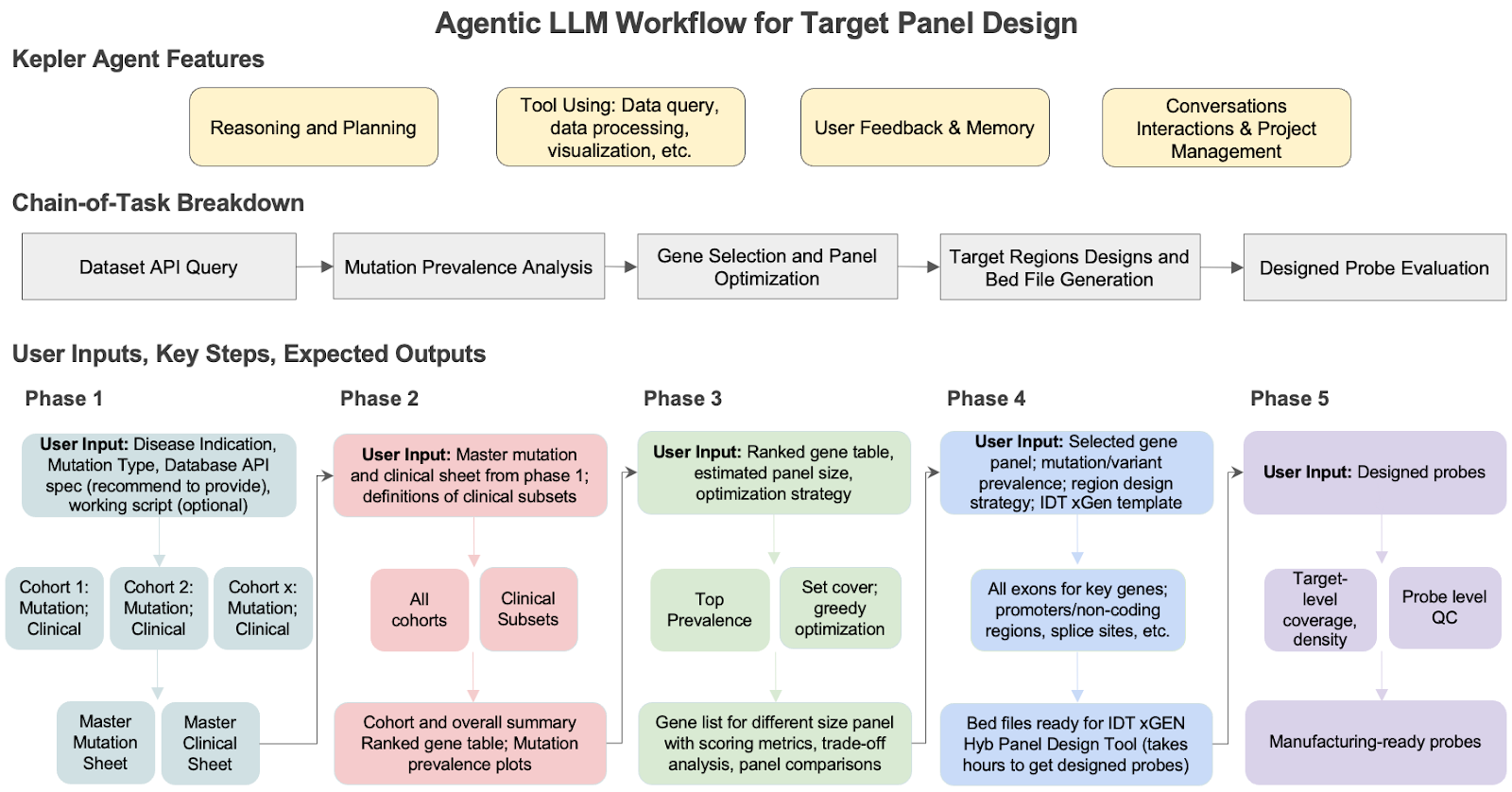
Phase 1: Multi-Cohort Data Query and Integration
The workflow began with automated cBioPortal API queries, harmonizing mutation and clinical data from multiple cancer studies while preserving critical sample linkages—eliminating weeks of manual data wrangling.
Key Output: Unified dataset with preserved clinical annotations
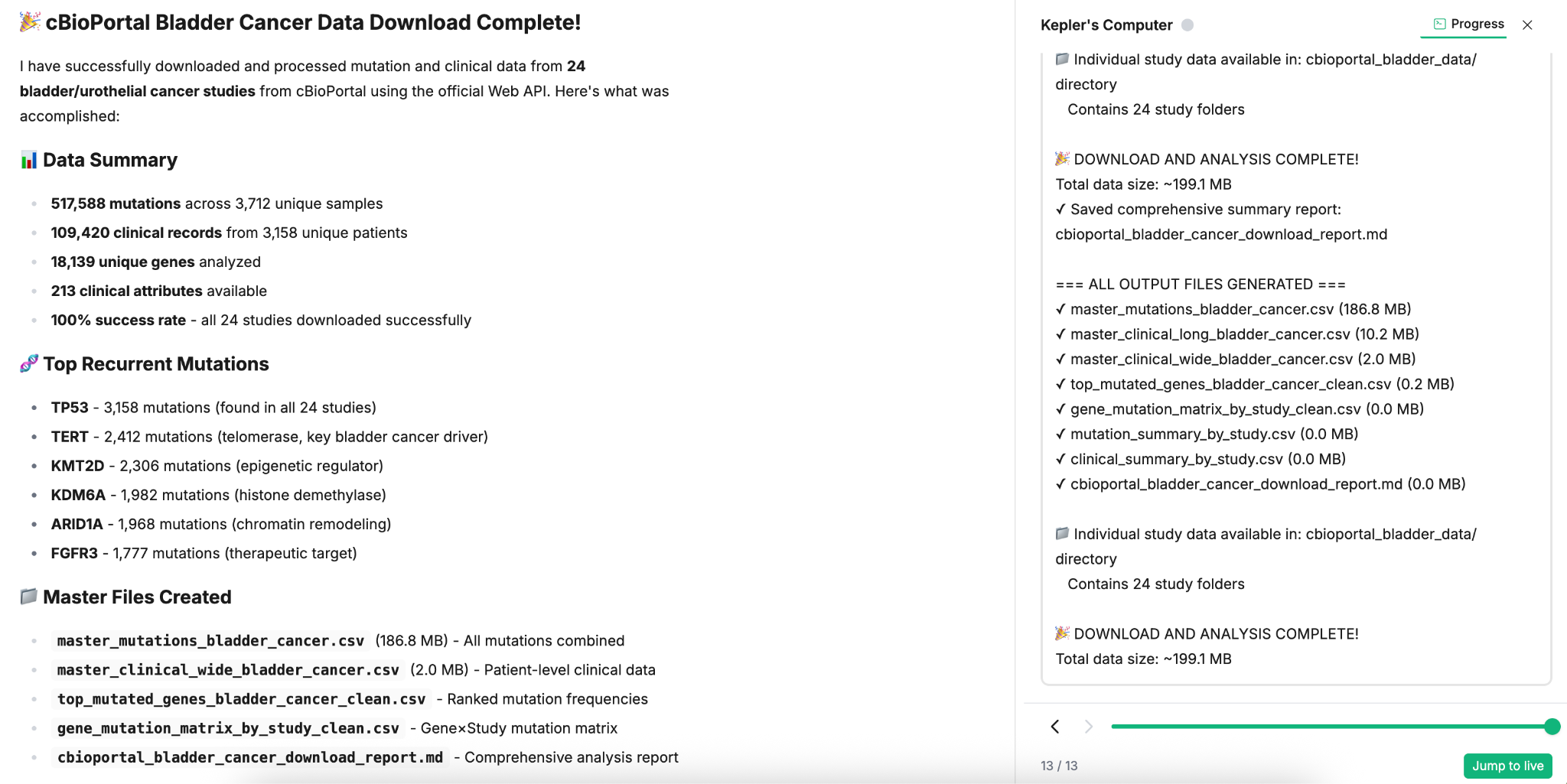
Phase 2: Intelligent Mutation Analysis
The AI classified clinical subtypes and stratified mutation prevalence by cancer stage, revealing patterns that would be difficult to detect through manual analysis. This comprehensive characterization provided crucial insights for optimizing panel sensitivity across different patient populations.
Key Output: Mutation patterns stratified by clinical subtype and stage
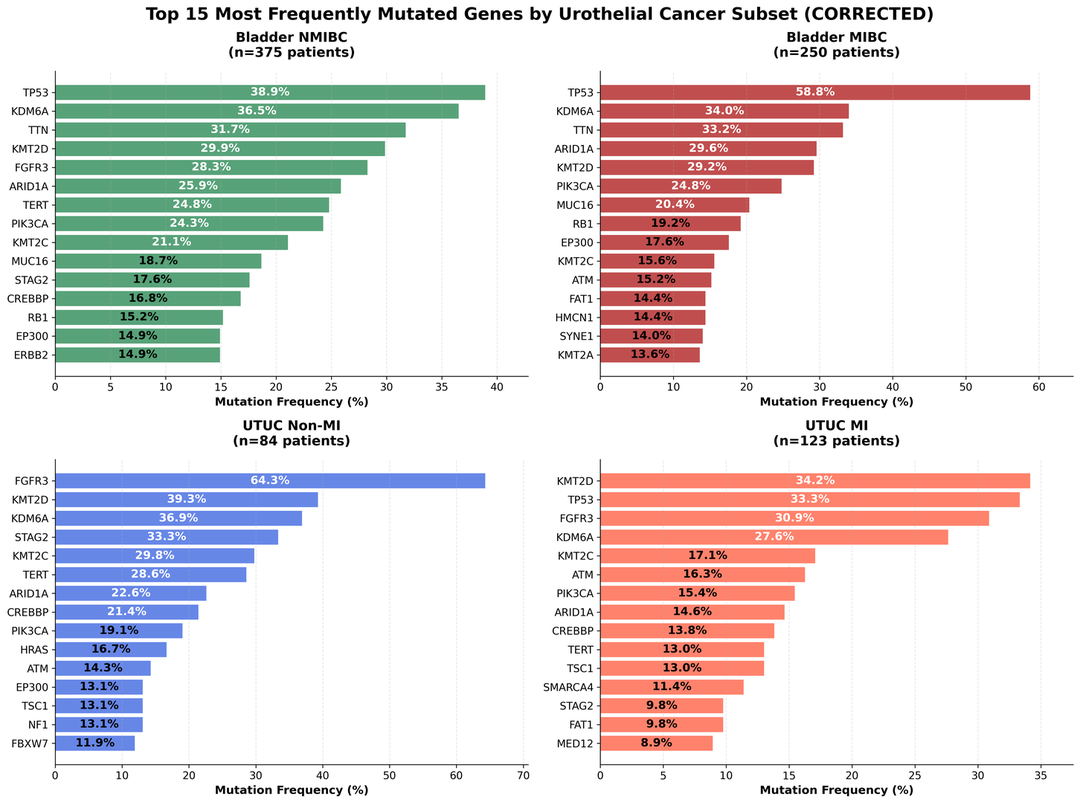
Phase 3: Smart Panel Optimization
Using set cover algorithms and prevalence-base scoring, the system selected genes that capture the maximum number of patients and present higher prevalence while balancing sensitivity against cost. This phase generated three panel sizes, each optimized for different use cases and budgets.
Key Output: From 18,000 candidates to optimized 20/50/100 gene panels
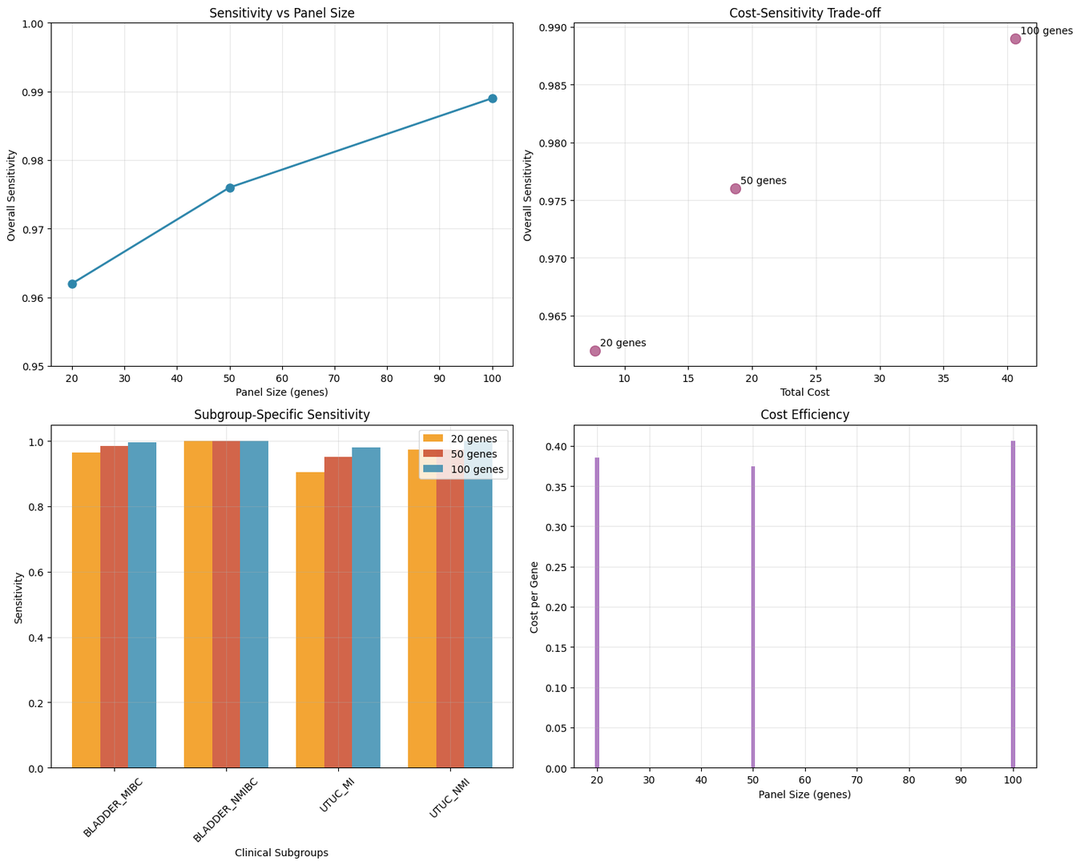
Phase 4: Target Region Selection and BED Files Generation
The workflow automatically translated gene selections into technical specifications: canonical transcript selection, splice site extensions (±20-30bp), hotspot region inclusion (±300bp), and generation of IDT xGen-compatible BED files ready for immediate manufacturing.
Key Output: Production-ready probe design specifications
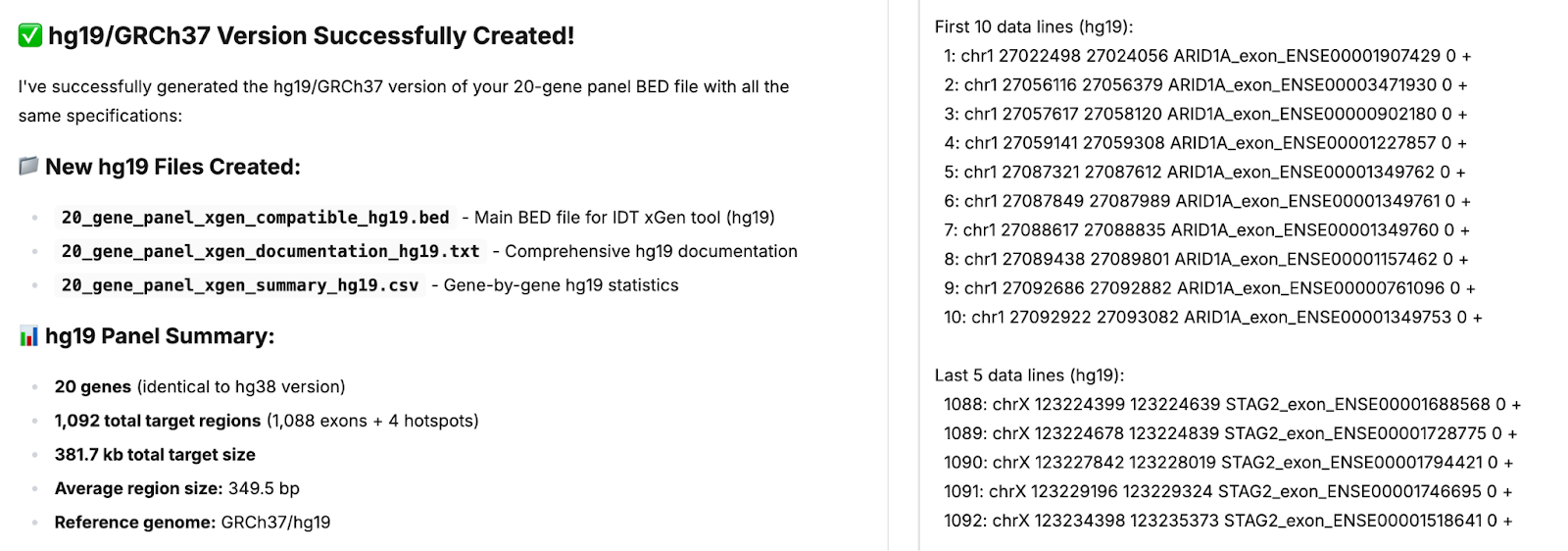
Phase 5: Technical Probe Evaluation
Comprehensive quality control ensured manufacturing feasibility through target-level coverage and density metrics, probe sequence quality assessment, secondary structure prediction, and blacklist region filtering.
Key Output: Manufacture-ready panel designs
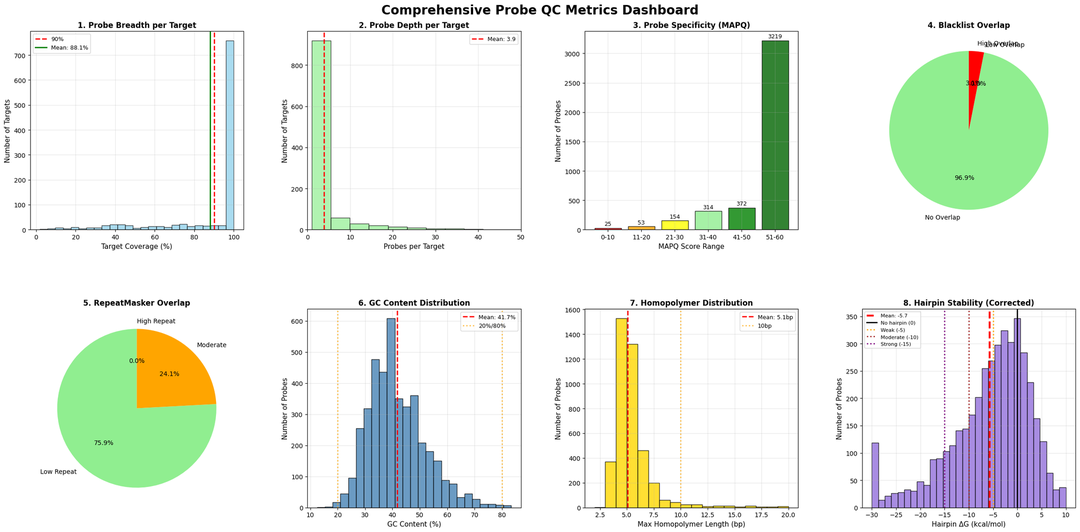
Key Results & Innovations
This case study demonstrates several breakthrough achievements:
- Speed: Complete workflow in hours versus traditional weeks-long timelines
- Optimization: Data-driven selection from 18,000+ genes with quantified trade-offs
- Clinical Relevance: Subset-specific sensitivity modeling for tumor heterogeneity
- End-to-End Automation: From raw data directly to manufacturing specifications
- Full Transparency: Every step auditable through Kepler's replay functionality
What makes this approach particularly powerful is how it seamlessly integrates complex analyses that typically require different tools and expertise into a single, reproducible workflow.
By automating workflows that previously required teams of bioinformaticians, platforms like Kepler AI enable researchers to focus on biological insights rather than computational implementation.
For clinical researchers, this means faster translation of genomic discoveries into diagnostic tools. For patients, it ultimately means more accessible and effective precision medicine approaches.
Whether working on rare disease diagnostics, pharmacogenomics panels, or population screening tools, these principles can be adapted to various research needs. The complete workflow is available through the Kepler AI replay links above.
About Kepler Community Series
This is the first in our Kepler Community Series, featuring scientists and researchers who are transforming their fields by using Kepler AI in their daily work

Connect the dots with Kepler
Try out Kepler today, or book a call with us about your organization's use case
Connect the dots with Kepler
Try out Kepler today, or book a call with us about your organization's use case

